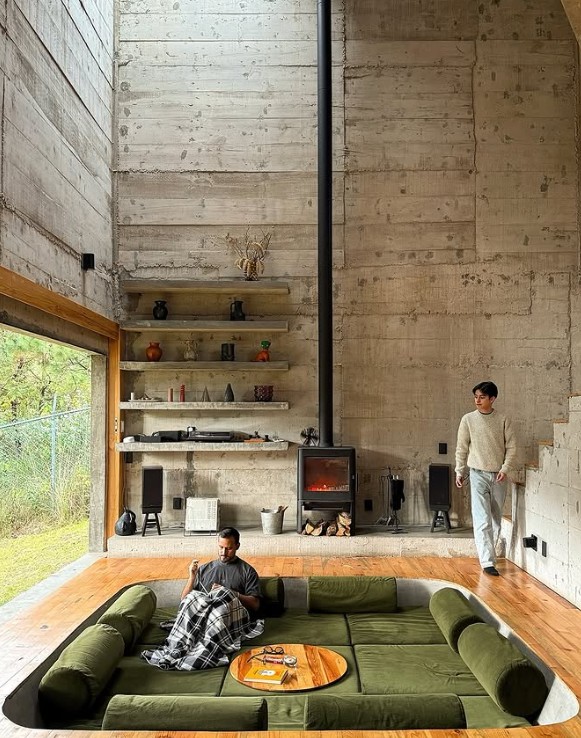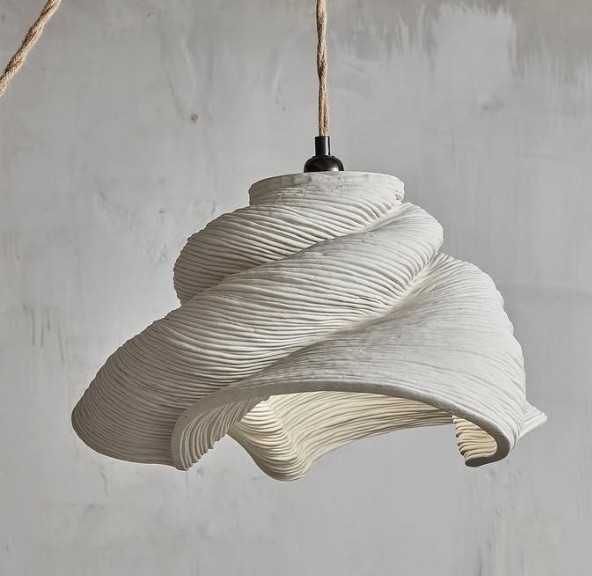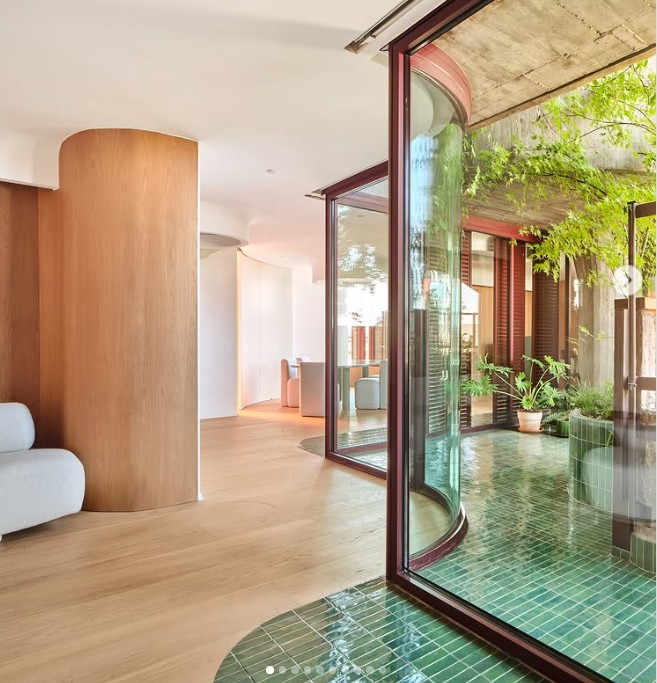Minimalism has long been celebrated in interior design for its emphasis on open layouts, clean lines, and functional living.
Brutalism – an offshoot of minimalist principle in home decor designing, is known for its strong architectural language — concrete walls, steel accents, glass facades, and bold geometric shapes. While striking, it often comes across as cold and impersonal.
Now, a new design language is taking shape: Soft Brutalism. This trend has emerged strongly in 2025, which converts the rawness of brutalism with a gentler, more livable aesthetic. It keeps the honesty of materials and bold structures but softens them with warmth, texture, and organic comfort.
What Is Soft Brutalism?
At its core, Soft Brutalism preserves brutalism’s philosophy of authenticity — exposing raw materials and celebrating structure — but balances it with human-centered design.
Where traditional brutalism leaned heavily on concrete, glass, and steel, the softer version introduces earthy palettes, tactile finishes, and organic elements. Instead of evoking austerity, spaces radiate comfort while retaining their architectural boldness.
Think of a concrete wall softened by a velvet sofa, a chunky stone coffee table paired with a boucle armchair, or warm wood beams cutting across an otherwise minimal layout. Soft Brutalism doesn’t abandon its roots; it reshapes them into a more nurturing aesthetic.
Why Soft Brutalism Is Trending in 2025
Today’s homeowners are increasingly seeking homes that balance structure and soul. Minimalism has evolved from cold, sterile environments to warmer interpretations. The modern approach acknowledges the need for coziness, natural light, and a sense of well-being without letting go of strong forms and raw materials.
This trend is especially appealing in urban settings, where the fusion style creates homes that feel grounded yet livable — architectural statements with heart.
5 Ways to Bring Soft Brutalism into Your Home
Here are the top five design ideas to incorporate this rising style into your interiors:
1. Concrete Design Reinvented
Concrete remains central, but it’s no longer confined to rough, grey slabs. Designers now use polished surfaces, soft curves, and lighter tones to make concrete more approachable. From countertops and fireplaces to dining tables, concrete is paired with elements like wool rugs, velvet seating, or cane chairs. This contrast elevates its strength while adding warmth.

2. Oversized Forms with Organic Flow
Sculptural, oversized furniture pieces anchor a soft brutalist room. Wide-legged armchairs, thick cabinetry, or bold archways set a dramatic tone. However, these heavy forms are softened by rounded edges and cozy upholstery. For instance, an oversized sofa or a stone coffee table with smooth curves delivers impact without harshness.

3. Muted Tones with Rich Textures
Instead of stark black and white, soft brutalism favors earthy and subtle colour shades — sandy beige, sage green, clay, chalky grey, and warm browns. Texture is just as important as color. Raw concrete next to brushed stone, linen curtains against metal frames, or oak paired with leather create layers of tactility that make spaces visually rich yet calm.

4. Use Warm Lighting
Lighting instantly transforms the mood in any home’s interiors. Swap out industrial, cold fixtures for sculptural lamps and pendants with warm tones. Organic shapes in lighting design add softness, while golden or amber glows enhance the welcoming atmosphere.

5. Natural and Handcrafted Touches
Nature is key in softening brutalism. Indoor plants, woven baskets, terrazzo floors, or ceramic accessories introduce life and warmth. Wooden beams or handcrafted objects bring imperfection into rigid spaces, balancing order with human touch.

The Takeaway
Soft Brutalism blends raw architectural honesty with comfort, tactility, and warmth. If you’re drawn to the boldness of exposed concrete and striking geometry but also crave a space that feels nurturing, this design trend may be your perfect match.
As interiors continue evolving in 2025, ‘soft brutalism‘ stands out as a style that merges strength with softness, minimalism with coziness, and structure with soul — proving that even the boldest design languages can have a warm, human side.

